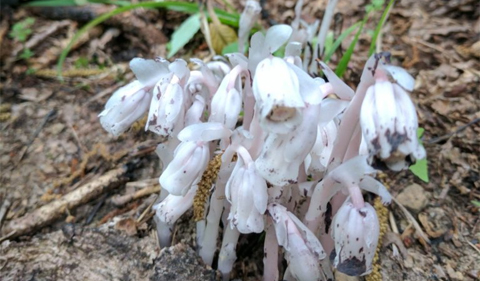
Monotropa uniflora
By Trevor Somogyi ’18 and Emily Penn ’18
Hello!
Emily and Trevor are back to share with you a few interesting plants we’ve found while doing our survey work for the Wayne National Forest. While these are not plants that are rare or sensitive, they do have some unique characteristics that might pique the interest of the non plant-nerd.
A strange looking plant we commonly see is the American squaw-root (Conopholis americana).
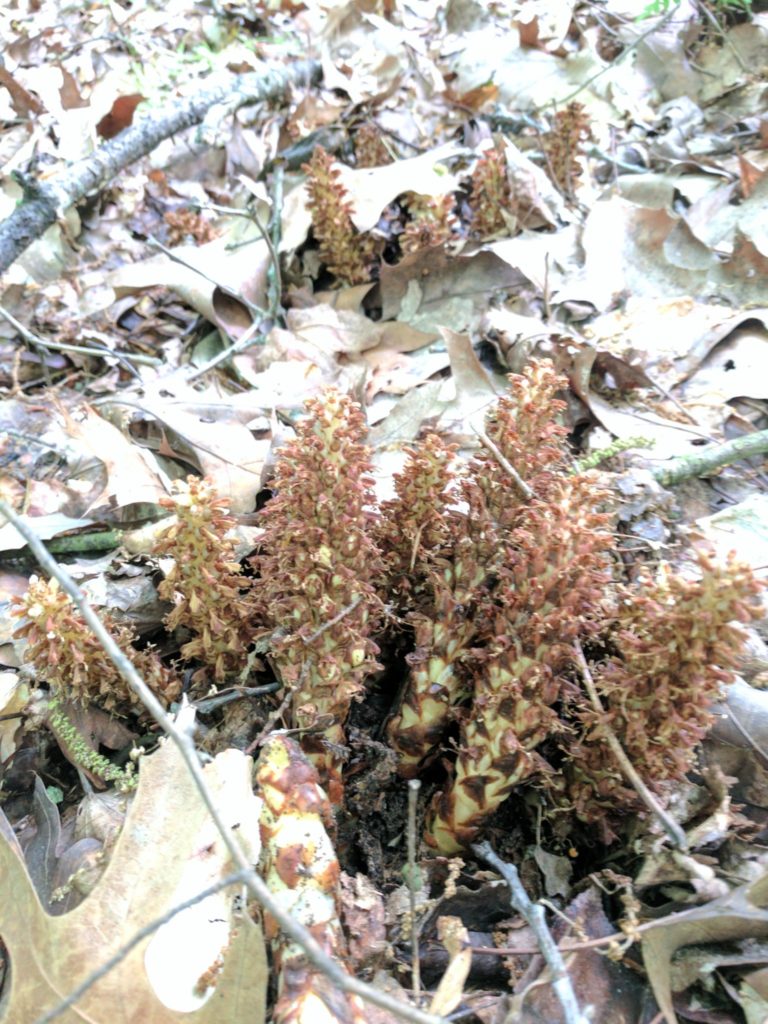
Conopholis americana in the Wayne. 12 May 2017.
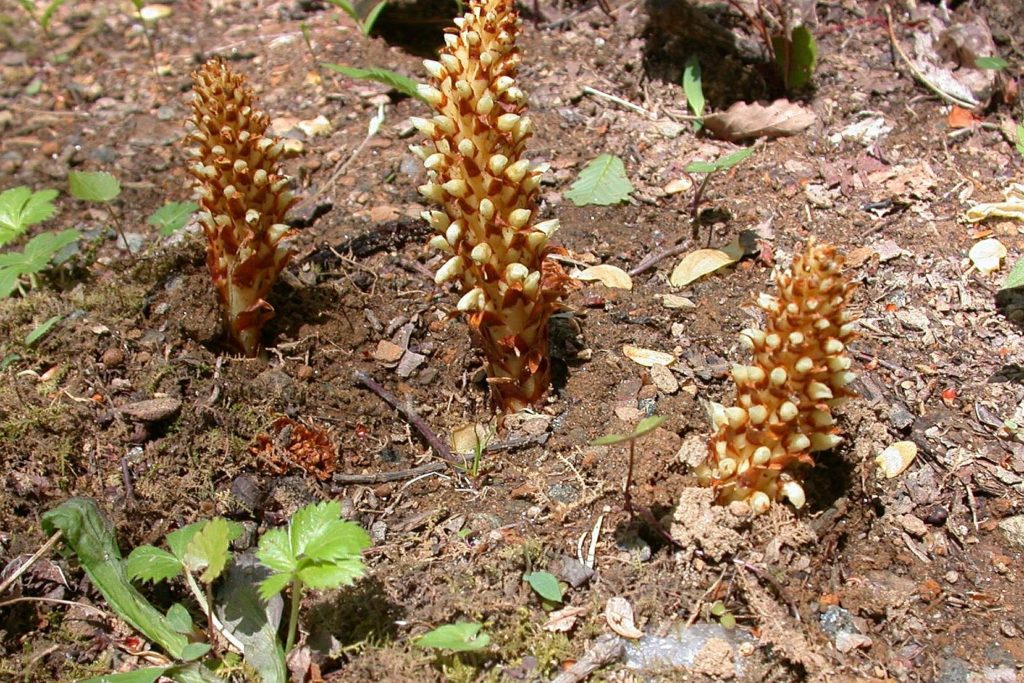
Source: http://www.ncwildflower.org/plant_galleries/details/conopholis-americana
The first thing you might notice about this plant is the lack of the color green. This is caused by the absence of chloroplasts, the organelle within a plant cell that contains chlorophyll. As a result, this plant is not capable of photosynthesis. It is interesting to know that there are plants that lack the very defining characteristic that makes an organism a plant, the ability to absorb energy from sunlight. Conopholis americana belongs to a group of about 4,500 species that are known as parasitic; meaning, they derive some, or in the case of the squaw-root, all of their nutrients from another living plant. It accomplishes this by having roots that suck the nutrients from other roots, specifically those of the Oak (Quercus) and Beech ( Fagus) genera.
Another parasitic plant that is arguably even more odd looking is the ghost plant (Monotropa uniflora). This plant parasitizes fungi that have a mycorrhizal relationship with the roots of trees. This term describes a fungus that has a mutually beneficial relationship of nutrient exchange with its host plant.
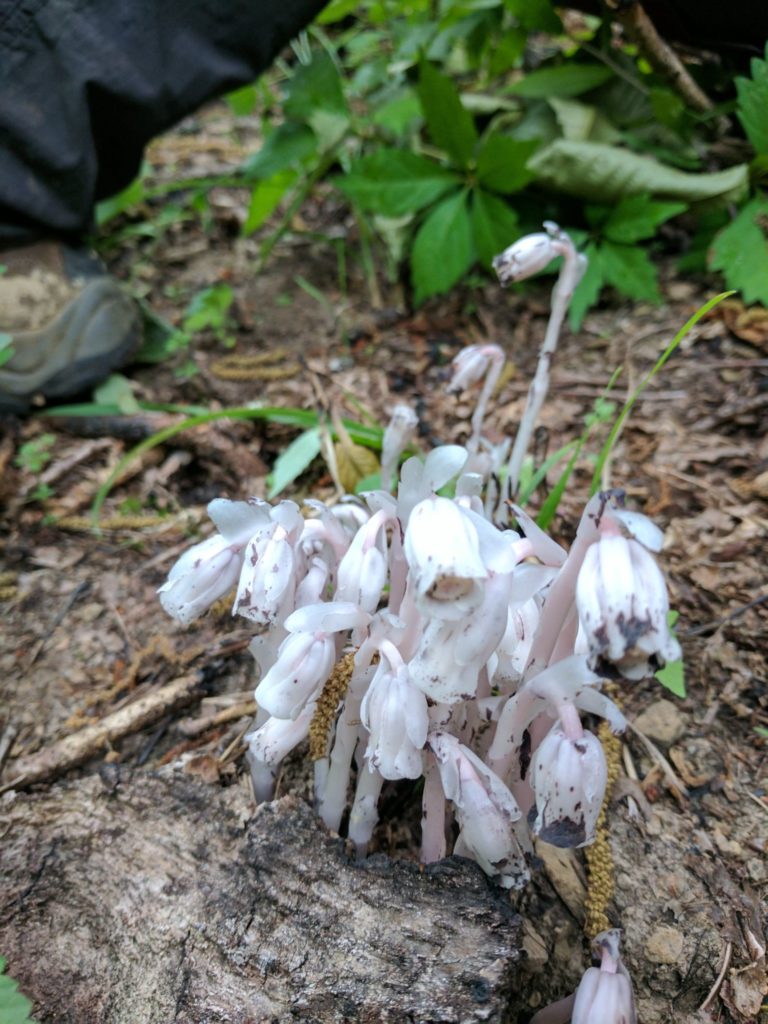
Monotropa uniflora. 13 June 2017.
One last plant we commonly see with a unique characteristic is known as bloodroot (Sanguinaria canadensis). The Latin comes from the word ‘sanguine’ which means blood-red. Although it has an interesting leaf shape, the coolest thing about this plant is seen when you dig the root up and cut it open.
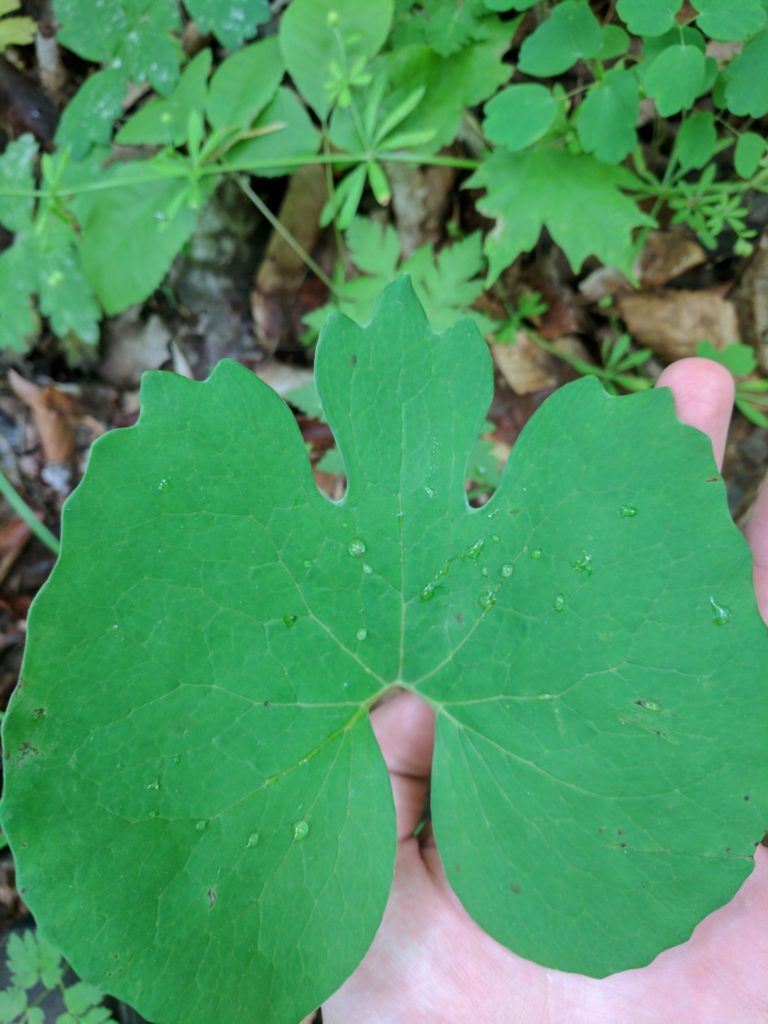
Sanguinaria canadensis. 11 May 2017.
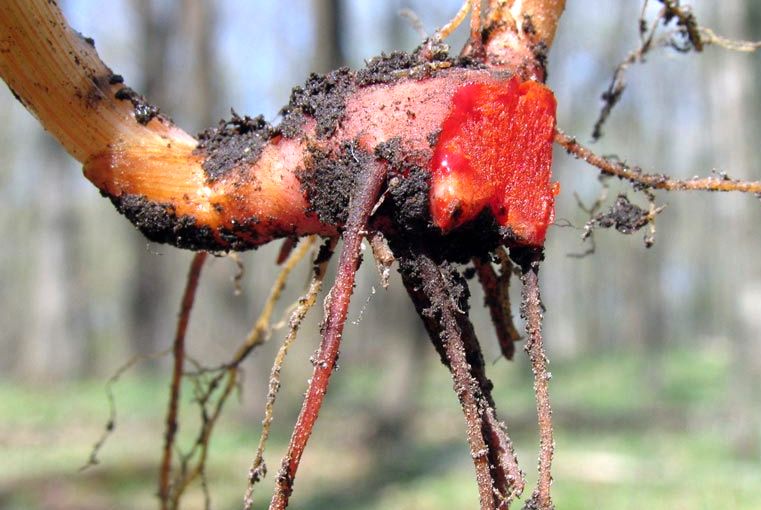
Source: http://www.tipdisease.com/2015/06/bloodroot-sanguinaria-canadensis.html
I hope you enjoyed our showcase of some of the cool and unique plants found in the Wayne. Stay tuned for more!
-Trevor and Emily



















Comments